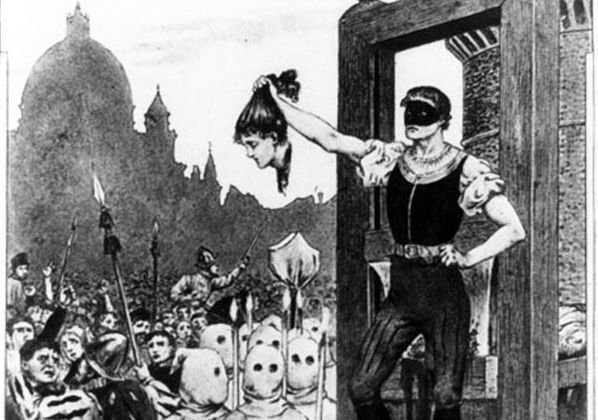The tragic life and death of Beatrice Cenci
The haunting story of Beatrice Cenci (1577-1599).
The tragic tale of Beatrice Cenci, the young Roman noblewoman who murdered her abusive father before being beheaded on a bridge in 16th-century Rome, still fascinates today.
Born the daughter of Count Francesco Cenci on 6 February 1577, Beatrice was seven years old when her mother Ersilia Santacroce died.
The family lived at Palazzo Cenci at the edge of the Jewish Ghetto area of central Rome, along with the count's second wife Lucrezia Petroni.
Sexual crimes
Count Cenci was a violent and depraved individual who abused his first wife and sons and raped his daughter Beatrice multiple times.
The count was jailed, and often fined, for sexual crimes committed against others but due to his noble status he was freed early.
Despite Beatrice's frequent attempts to inform authorities of the horrendous abuse suffered by the family, no action was taken against the count, although many Romans were well aware of the terrible goings-on in Palazzo Cenci.
When the count discovered that Beatrice had reported him, he banished her and Lucrezia to live in the family's castle at La Petrella del Salto, in the Abruzzi mountains north-east of Rome.
Murder plot
Beatrice and Lucrezia hatched a plot to kill Count Cenci, engaging the help of Beatrice's elder brother Giacomo, and Bernardo, the count's son from his second marriage, along with two servants, one of who was secretly seduced by Beatrice.
When an attempt to drug the count's wine failed, the family bludgeoned him to death, throwing his body off a balcony to make it seem accidental.
However the papal authorities were not convinced and subsequently opened an investigation into the count's death.
Beatrice's lover was tortured to death without revealing the truth, while a friend of the Cenci family had the other vassal killed to avoid the risk of the truth coming out.
Death sentence
Nonetheless, the plot was discovered and the four members of the Cenci family were arrested, found guilty, and sentenced to death.
Knowing the reasons behind the murder, Romans protested against the tribunal's decision, however Pope Clement VIII showed no mercy and ordered the public executions to go ahead.

At dawn on 11 September 1599, the family was taken to Ponte S. Angelo, where Giacomo's head was smashed with a mallet before his corpse was quartered. Next were Lucrezia and Beatrice, both of whom were beheaded with a small axe.
Execution
The 12-year-old Bernardo was spared but was forced to watch the execution of his relatives before returning to prison and being condemned to a life as a galley slave.
The Cenci properties were confiscated and ended up in the hands of the pope's own family.
Where is Beatrice Cenci buried?
Beatrice is buried in the church of S. Pietro in Montorio although the markings on her grave were allegedly destroyed by French troops in 1789.
Ghost of Beatrice Cenci
A legend in Rome dictates that each year on the night before the anniversary of her death, the ghost of Beatrice comes back to haunt the bridge where she was executed, carrying her severed head.
Over the centuries her story has captured the imagination of numerous writers and artists, from Shelley to Hawthorne, while to see a melancholy image of the ill-fated Beatrice, visit Palazzo Barberini where she is portrayed as a tragic Sibyl, the day before her execution, in a popular portrait by Guido Reni.
General Info
View on Map
The tragic life and death of Beatrice Cenci
Vicolo dei Cenci, 00186 Roma RM, Italy


















